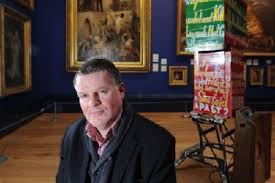Part of Leeds Art Gallery’s current ‘Dawn Chorus’ exhibition
Who is the better painter, Jack Vettriano or David Hockney? Who the better sculptor Antony Gormley or Henry Moore? Who is the better installation artist Damien Hirst or Marcel Duchamp? And do any of these even compare to the past masters from the Renaissance to Picasso? And does it matter?
The definition of art itself, let alone of good art, has always been contested, with people often agreeing to disagree. Yet in the past three decades the very idea that we can exercise aesthetic judgment has been denounced as suspect and elitist, so much so that we seem to have given up disagreeing about the quality of works of art altogether, at least in public.
Yet everyday people are forced to exercise judgment both in private and public life: art galleries have to decide what art to show; schools, universities and art colleges what art to put on the curriculum; art teachers what marks to give their pupils’ work; critics and judges of art competitions must give a verdict and justify their choices.
In practice, the literary and artistic canons live on, though in an uncontested form, and when there are controversies, these are seldom about the quality of the art itself but about its political or social ‘message’.
So, is aesthetic judgment is still necessary and possible in our non-judgmental age? And why does art matter anyway?




